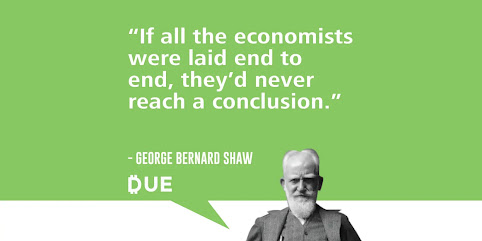Op-Ed: Bonds predict biggest recession in 50 years — this could get nasty with no Off switch
By Paul Wallis
December 26, 2023

Yields on bonds issued by the US Treasury have hit multiyear peaks in recent days, unnerving investors
- Copyright AFP/File VALERIE MACON
People living in the real economy, that is, the one you pay bills and eat in, will no doubt be delighted to hear there’s more bliss to come. According to analysts, the bond market, which has accurately predicted the last six recessions, is showing all the signs.
Bonds are debts. When you buy a bond, the issuer owes you money. The bond market is the biggest financial market in the world. The trouble with that is everything. If the bond market goes weird, so does the world.
There are many types of bonds. The best known are US Treasury bonds, a sort of gold standard indicator that directly influences government bonds worldwide. There are also corporate bonds and derivatives, securities issued on the basis of bonds. Other organizations like cities and counties also issue “municipal bonds”.
That’s the problem.
The grim-looking indicators are steep falls in bonds to extreme lows, followed by recession. The bond market was in a steep dive, and it’s now rising. Hence the expectation of a recession.
The bond ETF market apparently believes this. It’s been shuffling itself around, and the money has been piling in. That’s “collateral evidence” to the extent that someone obviously sees new value in bonds. Corporate bonds are also getting “fashionable”, another somewhat disturbing hint. “Fashionable” usually means the product is being pushed by the markets.
This comes at a time when the stock markets are getting a bit of confidence back. These markets usually fall when interest rates rise. They’ve been rising on the not-particularly committed assurance of the Fed of no more rate hikes. A press statement is not a rate decision.
It’s wishful thinking at best. Demand for money is high across the board. It’s a lender’s market. Lenders also feel the effects of rate rises on their own borrowing. It’s as vicious a circle as you could wish to see.
The bonds went lower than 2008 off a lower peak. Low-interest rates were supporting the high property prices and credit. That situation is now reversed. The various bond markets are very noisily positioning for their next moves.
What goes around has come around. This repositioning is a dynamic that moves a lot of money around the world, and it likes making money. The downside is a quite real risk of losing that big money.
This isn’t theoretical money. It’s real money. If it gets lost, it usually stays lost. The degree of paranoia in the markets about interest rates has been a great cow prod. Never mind the fact that interest rate rises were inevitable. Never mind the huge debts people took on at low rates. The fan was hit, and the world got sprayed.
The real economy is where the fallout lands. Price hikes are for coverage of costs, debts, losses on markets, and excuses for gouging. These hikes are also similar to trying to mop up the Pacific Ocean with a Kleenex in liquidity terms. Prices are raised, other people are affected, and the price hikes can’t match the losses.
The finance sector has caused some of the worst social and economic disasters in recent history. The sub-primes indicated a degree of criminality as well as market manipulation. Those worthless securities did more damage to the US and global economies than major wars in dollar terms.
The bond market is famous for being almost incomprehensibly boring. Not a lot happens; when it does, it’s usually at 0.25%. However – this market handles trillions of dollars. The sheer mass of debt has to have an effect if it starts moving.
Given the almost hysterical response to rate rises in the past, any big move by bonds could trigger a cascade effect. People will sell stocks and buy bonds. The bond prices are likely to get overinflated, etc.
The actual component debts are another matter. Debtors don’t like interest rate rises. You’d think they’d ditch the debts, but that’s expensive, too. You’re probably a lot better off debt-free in this environment, but these are major debts, like mortgages for businesses.
Add to this the question of solvency. If it weren’t for these debts, some people, companies, and businesses would be insolvent. Listed “zombie companies” are good examples. These debts pay their bills, or they’re broke.
Complex enough? A truism – Liquidity, like water, always finds the bottom line. The risk is drowning or dying of thirst. Or both.
__________________________________________________
Disclaimer
The opinions expressed in this Op-Ed are those of the author. They do not purport to reflect the opinions or views of the Digital Journal or its members.
People living in the real economy, that is, the one you pay bills and eat in, will no doubt be delighted to hear there’s more bliss to come. According to analysts, the bond market, which has accurately predicted the last six recessions, is showing all the signs.
Bonds are debts. When you buy a bond, the issuer owes you money. The bond market is the biggest financial market in the world. The trouble with that is everything. If the bond market goes weird, so does the world.
There are many types of bonds. The best known are US Treasury bonds, a sort of gold standard indicator that directly influences government bonds worldwide. There are also corporate bonds and derivatives, securities issued on the basis of bonds. Other organizations like cities and counties also issue “municipal bonds”.
That’s the problem.
The grim-looking indicators are steep falls in bonds to extreme lows, followed by recession. The bond market was in a steep dive, and it’s now rising. Hence the expectation of a recession.
The bond ETF market apparently believes this. It’s been shuffling itself around, and the money has been piling in. That’s “collateral evidence” to the extent that someone obviously sees new value in bonds. Corporate bonds are also getting “fashionable”, another somewhat disturbing hint. “Fashionable” usually means the product is being pushed by the markets.
This comes at a time when the stock markets are getting a bit of confidence back. These markets usually fall when interest rates rise. They’ve been rising on the not-particularly committed assurance of the Fed of no more rate hikes. A press statement is not a rate decision.
It’s wishful thinking at best. Demand for money is high across the board. It’s a lender’s market. Lenders also feel the effects of rate rises on their own borrowing. It’s as vicious a circle as you could wish to see.
The bonds went lower than 2008 off a lower peak. Low-interest rates were supporting the high property prices and credit. That situation is now reversed. The various bond markets are very noisily positioning for their next moves.
What goes around has come around. This repositioning is a dynamic that moves a lot of money around the world, and it likes making money. The downside is a quite real risk of losing that big money.
This isn’t theoretical money. It’s real money. If it gets lost, it usually stays lost. The degree of paranoia in the markets about interest rates has been a great cow prod. Never mind the fact that interest rate rises were inevitable. Never mind the huge debts people took on at low rates. The fan was hit, and the world got sprayed.
The real economy is where the fallout lands. Price hikes are for coverage of costs, debts, losses on markets, and excuses for gouging. These hikes are also similar to trying to mop up the Pacific Ocean with a Kleenex in liquidity terms. Prices are raised, other people are affected, and the price hikes can’t match the losses.
The finance sector has caused some of the worst social and economic disasters in recent history. The sub-primes indicated a degree of criminality as well as market manipulation. Those worthless securities did more damage to the US and global economies than major wars in dollar terms.
The bond market is famous for being almost incomprehensibly boring. Not a lot happens; when it does, it’s usually at 0.25%. However – this market handles trillions of dollars. The sheer mass of debt has to have an effect if it starts moving.
Given the almost hysterical response to rate rises in the past, any big move by bonds could trigger a cascade effect. People will sell stocks and buy bonds. The bond prices are likely to get overinflated, etc.
The actual component debts are another matter. Debtors don’t like interest rate rises. You’d think they’d ditch the debts, but that’s expensive, too. You’re probably a lot better off debt-free in this environment, but these are major debts, like mortgages for businesses.
Add to this the question of solvency. If it weren’t for these debts, some people, companies, and businesses would be insolvent. Listed “zombie companies” are good examples. These debts pay their bills, or they’re broke.
Complex enough? A truism – Liquidity, like water, always finds the bottom line. The risk is drowning or dying of thirst. Or both.
__________________________________________________
Disclaimer
The opinions expressed in this Op-Ed are those of the author. They do not purport to reflect the opinions or views of the Digital Journal or its members.

WRITTEN BYPaul Wallis
Editor-at-Large based in Sydney, Australia


No comments:
Post a Comment